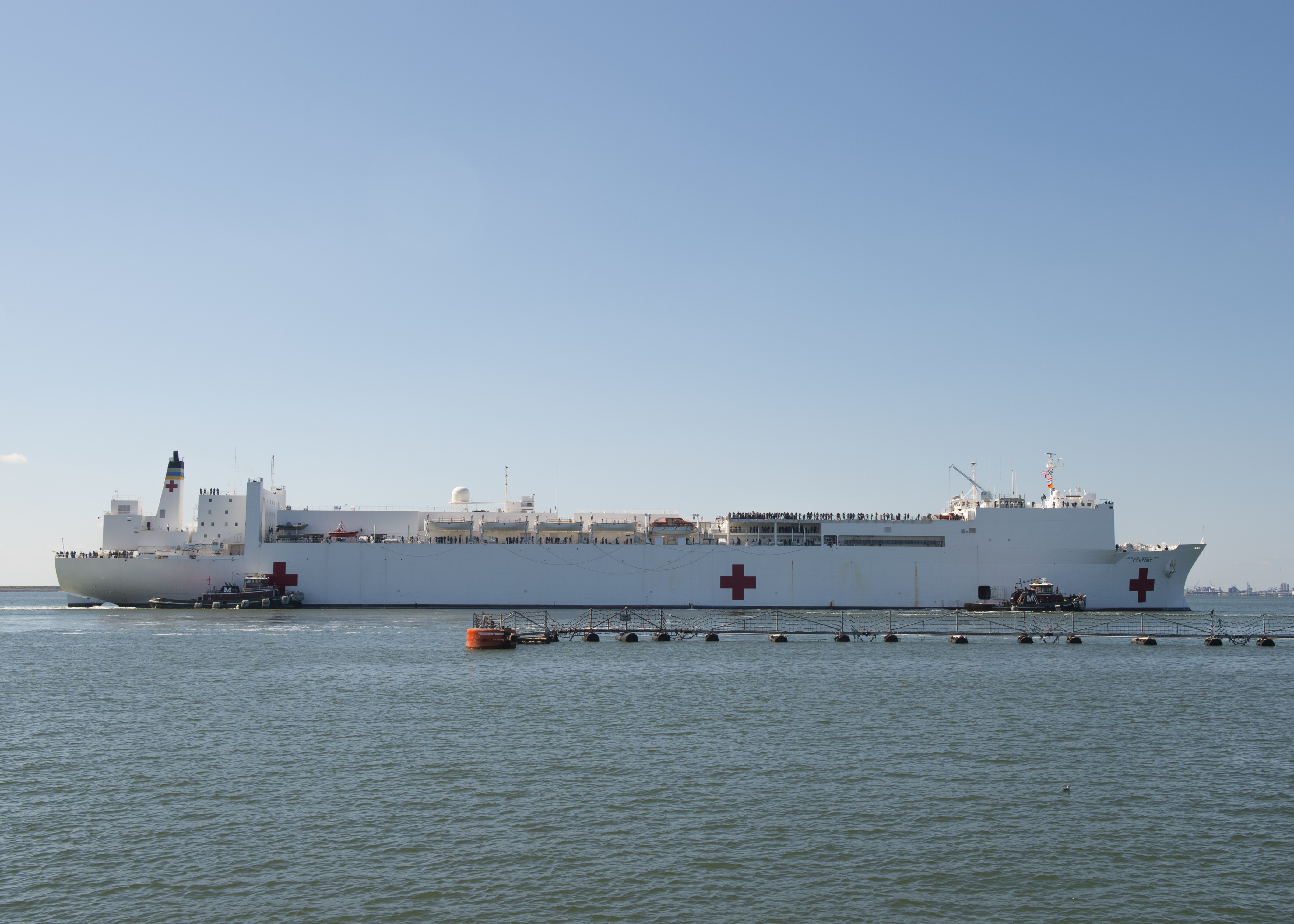The Military Is Finally Mobilizing Tactical Hospitals for Puerto Rico

Credit to Author: David Axe| Date: Tue, 03 Oct 2017 14:00:00 +0000
The US military’s Northern Command is scrambling to set up emergency medical infrastructure in Puerto Rico after Hurricane Maria wiped out many of the island’s hospitals and clinics on September 20.
The military medical system includes airborne hospital rooms, M.A.S.H.-style field hospitals and one 894-foot-long hospital ship with 800 medical personnel and a thousand patient beds. The military developed some of the components specifically for the wars in Iraq and Afghanistan.
“U.S. Northern Command continues to support the ongoing response efforts to Puerto Rico to provide life-saving and life-sustaining support to those in the affected areas,” the Colorado-based command stated. “The Department of Defense primary focus is on the distribution of supplies, medical aid support and the deployment of [Defense Department] logistical forces.”
Six days after Hurricane Maria made landfall in Puerto Rico, just 11 of the island territory’s hospitals had power or fuel for generators, according to the military. Airports, seaports and roads were damaged, preventing sick and hurt people from getting medical help.
Critics have accused the administration of President Donald Trump of responding too slowly to Hurricane Maria. The Navy hospital ship Comfort, based in Virginia, didn’t set sail until September 29. Other elements of the military medical system moved more quickly.
The Air Force announced that it began flying the sickest and most injured patients from Puerto Rico on September 24. To keep patients stable during flights lasting potentially hours, the flying branch activated some of its roughly three dozen Aeromedical Evacuation Squadrons, including the 45th AES based in Florida.
“When people are in pain and moved by air, our job is to provide care and make it comfortable for them,” Maj. Jonathan Freeman, an Air Force medical crew director, told a military reporter in 2015.
The squadrons had reorganized for the wars in Iraq and Afghanistan, and this made them much more responsive to Hurricane Maria. For decades, the aeromedical evacuation mission belonged to special squadrons flying a small number of unique aircraft with patient beds and medical equipment—including I.V.s and monitors—built into the cabin.
As casualties spiked in the wars, the Air Force retired the dedicated evacuation aircraft. To replace them, the flying branch developed self-contained intensive-care units. Each comes with a portable bed plus monitors and other equipment. Highly-trained teams of doctors and nurses—usually reservists whose days jobs are in civilian hospitals—can roll the units onto essentially all large military cargo planes.
Practically overnight, the military went from operating just a few dozen specialized medical-evacuation planes to possessing more than a thousand planes capable of supporting the roll-on beds.
For Hurricane Maria, the Air Force deployed C-130, C-17, C-5 and KC-135 transports. One top priority was getting dialysis patients out of Puerto Rico and surrounding islands.
In recent years the Army’s M.A.S.H.-style Combat Support Hospitals, one of which is now in Puerto Rico, have undergone a similar transformation as the aeromedical squadrons—becoming more flexible and mobile. In Iraq and Afghanistan, the 248-bed Army hospitals, which can operate out of tents, proved to be “too large and logistically difficult to deploy as a whole,” according to the Army.
So the ground branch began informally “slicing” the hospitals into smaller, self-contained groups that could move and set up more quickly. This summer, the Army made this practice official, and began reorganizing existing, 248-bed hospital units into separate detachments including 32-bed hospitals, a 24-bed surgical unit and a 60-bed recovery ward.
The Navy’s medical capabilities are arguably the most impressive of all the military branches’. In addition to Comfort—which is essentially a seagoing Level III hospital equipped for resuscitation, stabilization, surgery and recovery—the sailing branch has positioned USS Wasp, an 843-foot-long amphibious assault ship, in the Caribbean.
In the US fleet, Wasp‘s medical facilities are second only to the hospital ships’. The vessel’s surgical bays and beds and scores of medical personnel can handle 600 patients at a time.
But for all its sophistication, the military’s emergency medical system in Puerto Rico is meant to be temporary. Officials are scrambling to restore power and access to the island’s permanent medical facilities. On September 30, the Pentagon reported that all but five of Puerto Rico’s hospitals were “partially or fully operational.”
Get six of our favorite Motherboard stories every day by signing up for our newsletter.